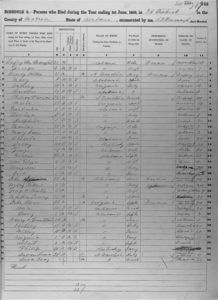Clay County, Alabama Marriage Records
The following information details the Clay County Alabama Marriage Records available online. Hosted at Clay County, USGenWeb Archives Project Clay County Alabama Marriages-Book A Clay County Alabama Marriages-Book B Clay County Alabama Marriages-Book C Clay County Alabama Marriages-Book D Clay County Alabama Marriages-Book E Clay County Alabama Marriages-Book F Index Of Clay County Marriage Books A,B,C Mary Ann Spivey – George Washington Smith January 19 1843 Lauderdale, Sarah Virginia – Cash, Hiram R. December 28 1886 Hosted at Clay County, ALGenWeb Index for Books A, B and C Surnames A – C Index for Books A, B and C Surnames … Read more


